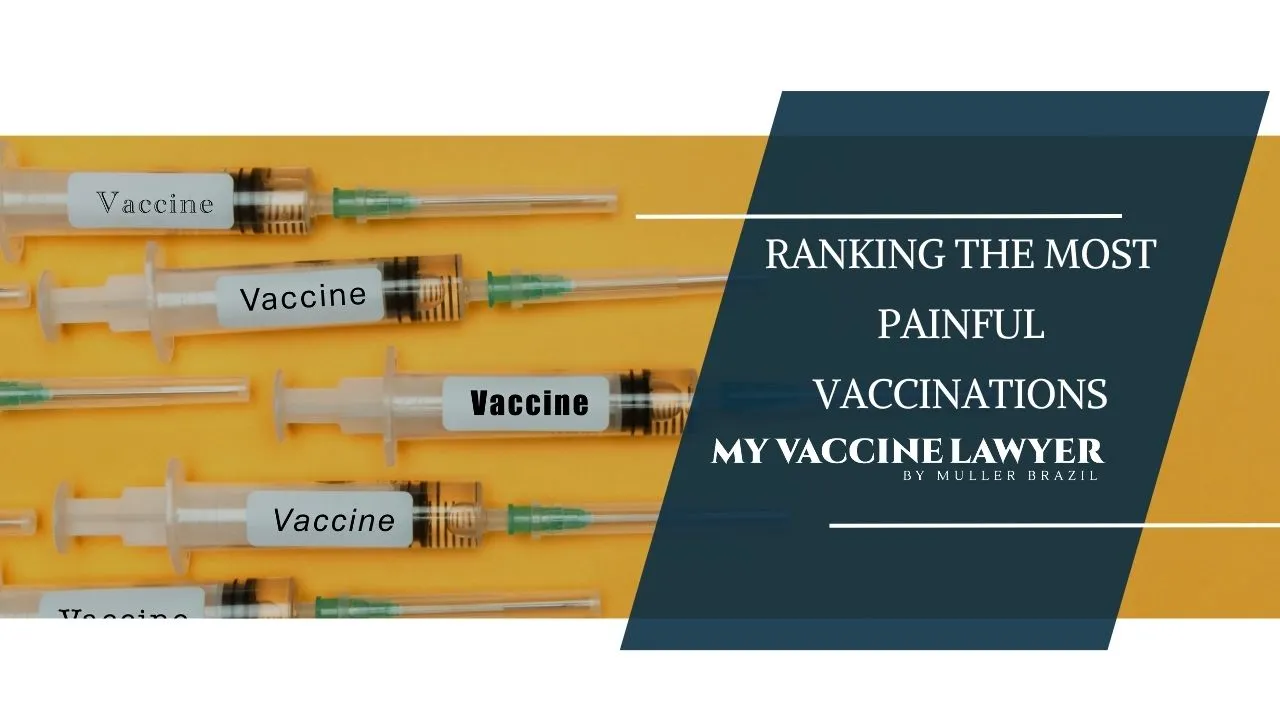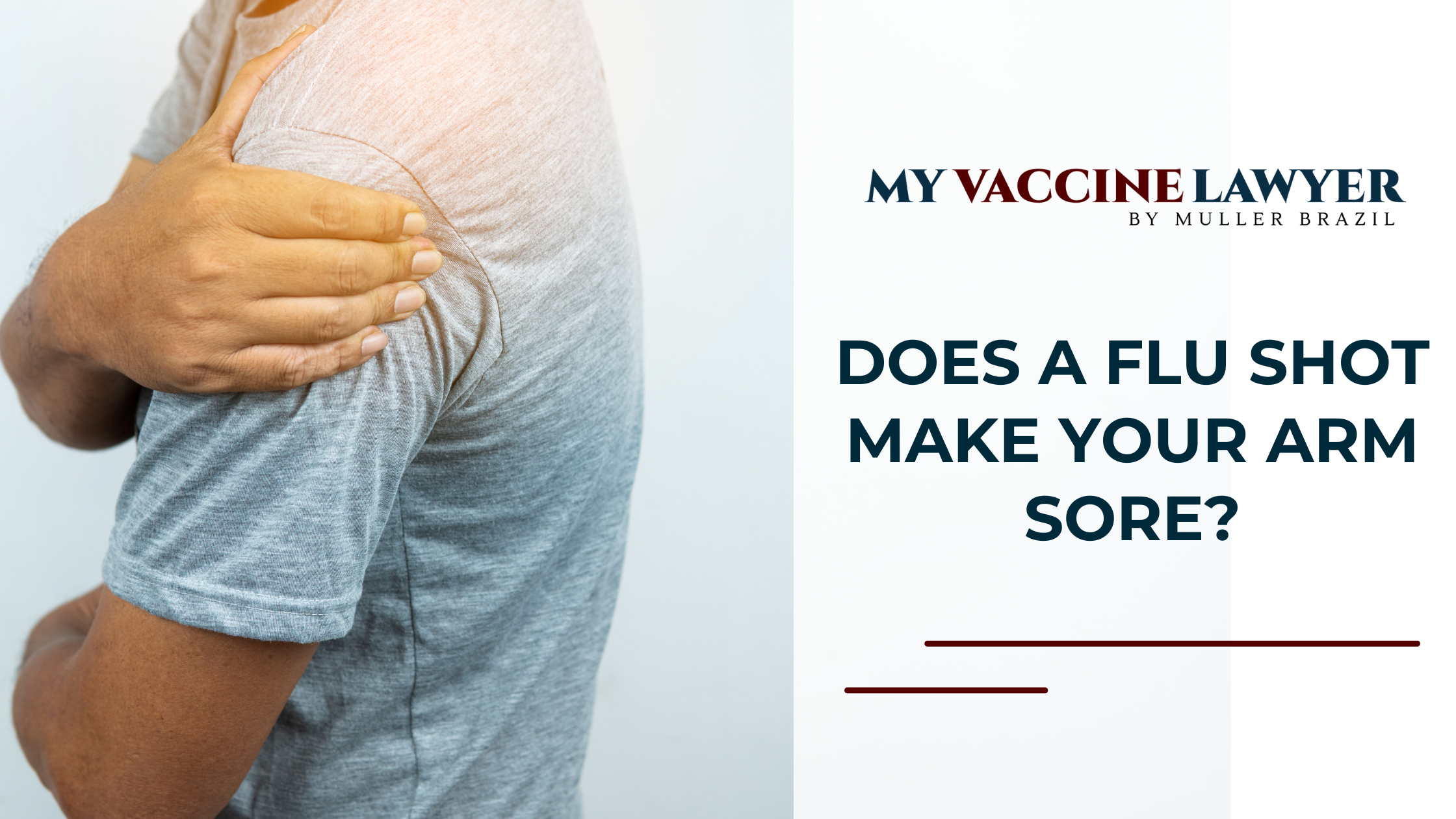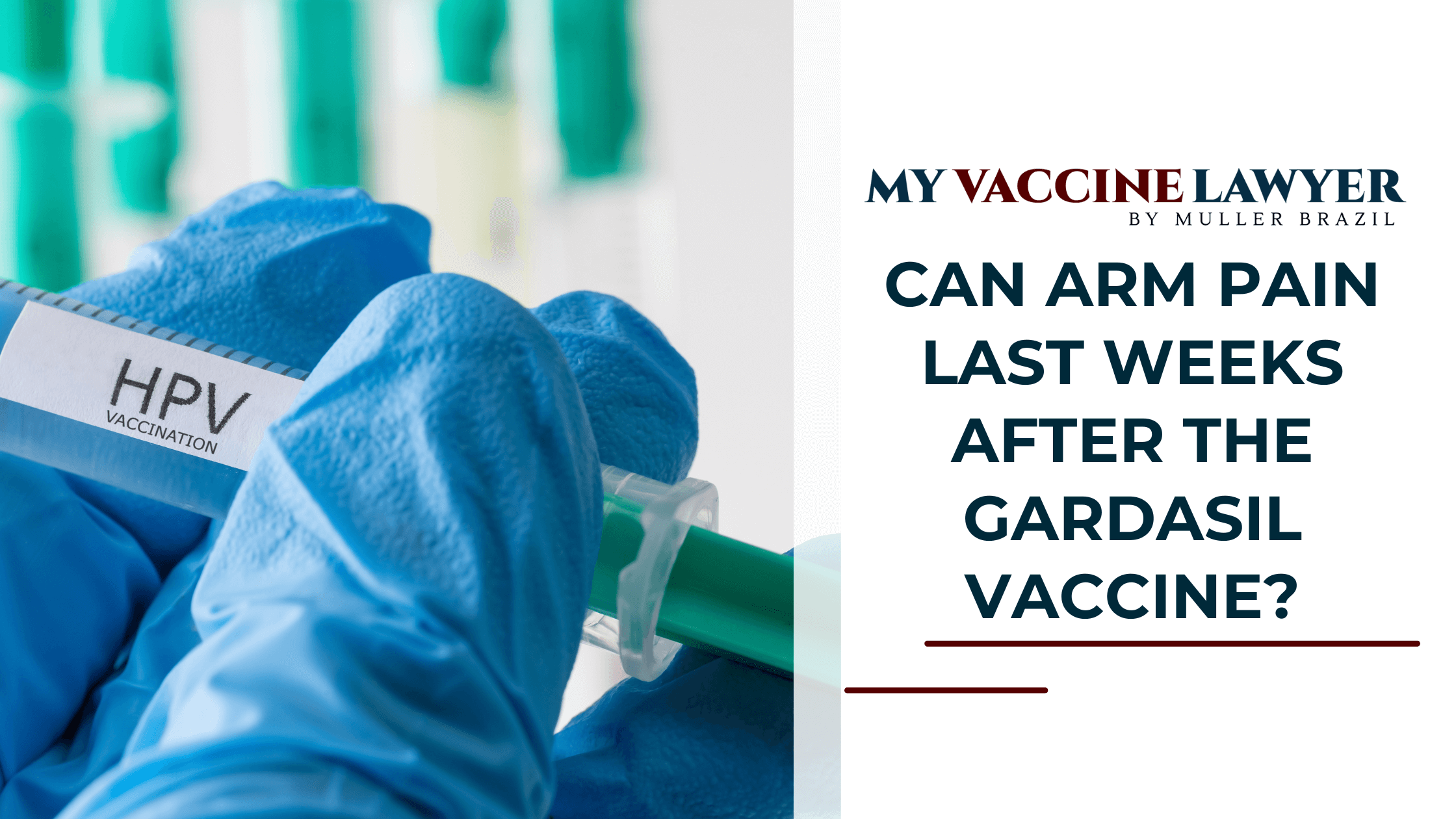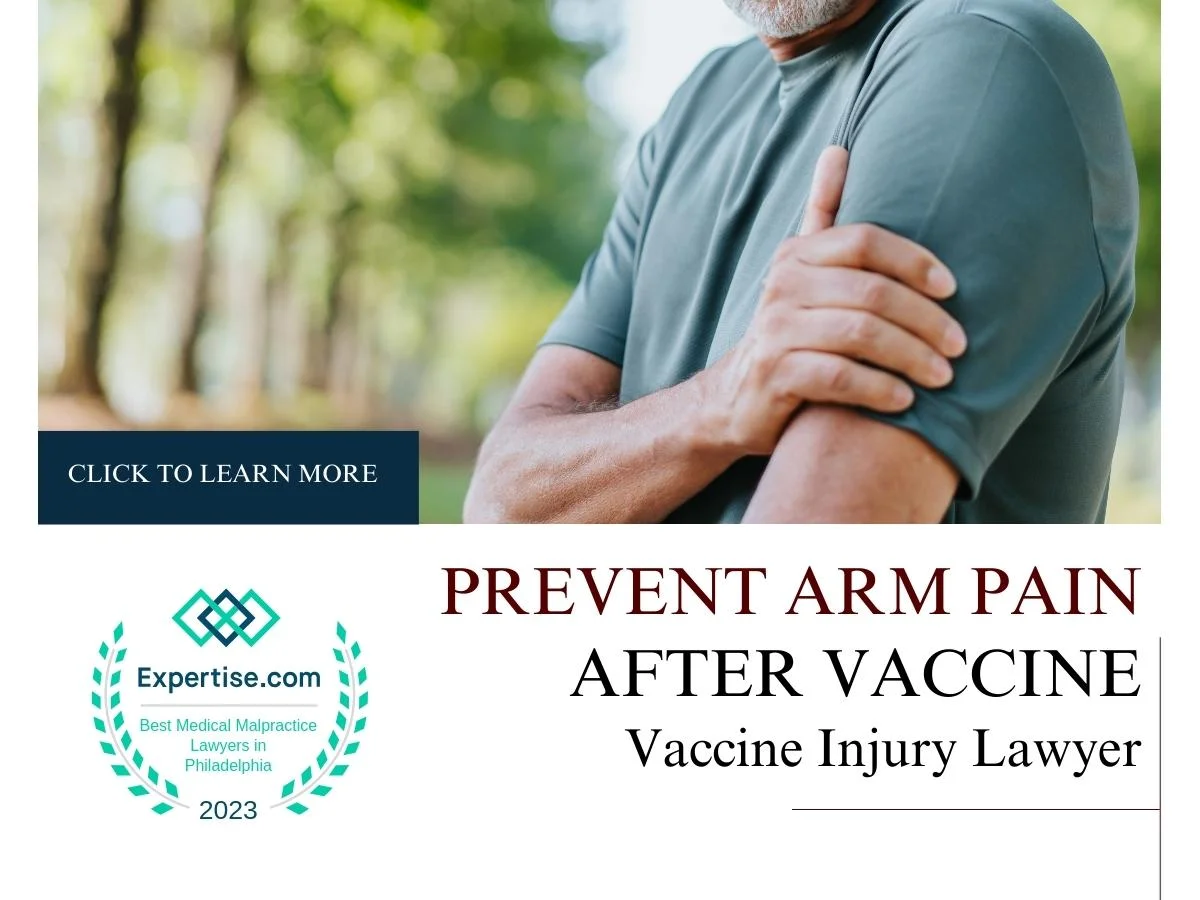Ranking the Most Painful Vaccinations: Immunization Discomfort
Some vaccines hurt more than others due to factors like the injection method, vaccine ingredients, and individual sensitivity relating to genetics...
12 min read
Vaccine Injury Law Resources / Max Muller / Prevent Arm Pain After a Vaccine: Tips and Techniques
 Max Muller
:
Mar 17, 2023 1:34:04 PM
Max Muller
:
Mar 17, 2023 1:34:04 PM
To prevent arm soreness after receiving a vaccine, make sure to hydrate well and get good rest before your appointment. Avoid alcohol and caffeine as they can increase inflammation. Make sure that the healthcare provider administers the vaccine properly by targeting the correct muscle group.
After receiving the vaccine, perform light arm exercises like arm circles or shoulder shrugs to improve blood flow and reduce inflammation. Applying heat or cold to the injection site can also help manage any pain and swelling, allowing you to keep up with your daily activities comfortably.
This pain and discomfort can be especially challenging for individuals who rely on their arms and hands, such as teachers, construction workers, and athletes. The good news: There are ways to prevent and manage vaccine-related arm pain that are effective, and you don't have to suffer needlessly. In this blog, we'll explore some of the best strategies for preventing arm pain after a vaccine so that you can continue with your daily activities without discomfort.
Whether you're a busy professional or a fitness enthusiast, these tips will help you stay healthy and pain-free.
If you've recently received a vaccination and are experiencing arm pain, it's important to understand what's happening. Vaccine arm pain is a normal side effect in many people after vaccination.
The pain is typically caused by inflammation at the injection site as your immune system responds to the vaccine. This inflammation can cause soreness, redness, and even swelling.
Vaccine arm pain is a common side effect of most vaccinations.
It's estimated that up to 80% of people will experience arm pain after receiving a vaccine.
The duration of vaccine arm pain can vary from person to person and depends on several factors, including the type of vaccine and your immune response.
The pain will usually last for one to two days and gradually subside. However, some people may experience pain up to a week after vaccination. If you're experiencing persistent or severe pain, speaking with your healthcare provider is important.
While vaccine arm pain is a common side effect of vaccinations, there are several strategies you can use to prevent or minimize discomfort. Here are some of the best strategies on how to prevent arm pain after a vaccine:
One of the best ways to prevent vaccine arm pain is to prepare your body before your vaccination appointment. This means staying hydrated, getting plenty of rest, and eating healthy before your appointment.
It's also important to avoid alcohol and caffeine before and after your vaccination, as these substances can dehydrate you and make inflammation worse.
Another important factor in preventing vaccine arm pain is the technique used during the vaccination. Ensure your healthcare provider uses the proper injection technique and targets the correct muscle group. It's also important to avoid unnecessary movement or pressure on the injection site after receiving the vaccine.
Believe it or not, exercise can help prevent vaccine arm pain. This is because physical activity can improve blood flow and lymphatic drainage, which can help reduce inflammation and promote healing. Consider doing light arm exercises before and after your vaccination appointment, like arm circles or shoulder shrugs.
Lateral deltoid raises are a great exercise for strengthening the shoulder muscles and improving range of motion.
With your feet shoulder-width apart and holding a weight in each hand at your sides. Slowly lift your arms out to the side, keeping your elbows slightly bent and your palms facing down. Lift your arms until they are parallel to the ground, then slowly lower them back down to your sides. Repeat for multiple repetitions.
Stand with your feet shoulder-width apart and hold a resistance band or lightweight in your hand. Bend your elbow and bring your arm up to a 90-degree angle, with your elbow at shoulder height. Keeping your elbow tucked into your side, rotate your arm outward, away from your body. Slowly bring your arm back to the starting position and repeat for several repetitions.
With this exercise, stand with your feet shoulder-width apart and hold a resistance band or lightweight in your hand. Tuck your elbow into your side and rotate your arm outward, away from your body. Slowly bring your arm back to the starting position and repeat for several repetitions.
To perform the overhead press, stand with your feet shoulder-width apart and hold a dumbbell in each hand at shoulder height. Press the weights overhead, straightening your arms fully. Slowly lower the weights to shoulder height and repeat for several repetitions.
Horizontal abduction with external rotation is another exercise that can help prevent arm pain after a vaccine. To perform this exercise, lie on your stomach with your arms at your sides.
Hold a light weight in each hand and lift your arms out to the side, keeping your elbows slightly bent and your palms facing down. As you lift your arms, rotate them outward, away from your body. Slowly lower your arms back down to your sides and repeat for several repetitions. This exercise can also be performed while standing, using a resistance band or cable machine.
Several natural remedies can help prevent vaccine arm pain.
A natural anti-inflammatory supplement like turmeric or ginger can also help prevent pain and discomfort. Finally, make sure you're getting enough vitamin D, as this important nutrient plays a key role in immune function and can help reduce inflammation.
If you're experiencing vaccine arm pain after a vaccine, there are several strategies you can use to manage your discomfort. Here are some of the best ways to alleviate pain and promote healing:
One of the most effective ways to manage vaccine arm pain is to do simple stretches and exercises to alleviate discomfort. This can help improve blood flow to the injection site, reduce inflammation, and prevent stiffness. Some good exercises include shoulder rolls, arm circles, and gentle stretches.
Talk to your healthcare provider before starting any new exercise routine.
Over-the-counter pain relief options can be helpful if you're experiencing pain or discomfort after receiving a vaccination. Acetaminophen (Tylenol) or ibuprofen (Advil) can help reduce inflammation and alleviate pain.
Follow the recommended dosage guidelines and talk to your healthcare provider before taking any new medication.
Heat and ice can also be effective at managing vaccine arm pain. Applying a warm compress to the injection site can help improve blood flow and reduce inflammation. Alternatively, applying an ice pack or cold compress can help numb the area and reduce pain and swelling. Be sure to wrap the compress in a towel or cloth to prevent skin irritation, and only apply for 10-15 minutes at a time.
While vaccine arm pain is usually a normal and expected side effect, there are some situations where you should seek medical attention. Here's what you need to know:
In rare cases, vaccine arm pain can be a sign of a more serious reaction to the vaccine. If you experience any of the following symptoms after receiving a vaccine, seek medical attention immediately:
It's important to differentiate between normal vaccine arm pain and an allergic reaction, which can be more serious. Normal vaccine arm pain is usually mild and disappears within a few days. On the other hand, allergic reactions can occur within minutes to hours after receiving a vaccine and can be life-threatening. If you experience any symptoms of an allergic reaction, seek medical attention immediately.
If you're experiencing persistent, severe, or worsening pain after receiving a vaccine, it's important to speak with your healthcare provider. They can evaluate your symptoms and recommend the best course of treatment. Sometimes, you may need additional medical attention or further testing to rule out a more serious underlying condition.
While vaccine arm pain is a common and usually mild side effect, some individuals may experience more serious vaccine-related arm issues. Here are some of the most common serious vaccine-related arm injuries:
SIRVA (Shoulder Injury Related to Vaccine Administration) is a rare but serious condition that can occur after receiving a vaccine. An injection causes SIRVA into the deltoid muscle that is too high or too deep, causing damage to the surrounding tissue, ligaments, and nerves. This can lead to inflammation and pain in the shoulder that can range from mild to severe.
Symptoms of SIRVA typically include pain, swelling, and limited range of motion in the shoulder. The pain is usually localized to the injection site and may be accompanied by stiffness or weakness in the affected arm. In severe cases, individuals may experience difficulty sleeping, performing daily activities, or lifting heavy objects.
Diagnosis of SIRVA typically involves a physical examination, medical history review, and imaging studies such as X-rays, ultrasounds, or MRIs. Treatment may include rest, physical therapy, and non-steroidal anti-inflammatory drugs (NSAIDs) to manage pain and inflammation. In some cases, corticosteroid injections or surgery may be necessary to relieve symptoms.
While SIRVA is a rare condition, seeking medical attention is important if you experience any concerning symptoms after receiving a vaccine. Early diagnosis and treatment can help prevent long-term complications and improve outcomes. It's also important to note that the risk of SIRVA is much lower than the risk of complications from vaccine-preventable diseases, making vaccination an important tool for protecting public health.
Frozen shoulder, also known as adhesive capsulitis, is a condition that causes pain, stiffness, and limited range of motion in the shoulder joint. While the exact cause of a frozen shoulder is not fully understood, it is believed to be related to inflammation and scarring of the shoulder capsule, which is the connective tissue surrounding the shoulder joint.
A frozen shoulder can occur due to vaccination, particularly after a flu shot. The exact mechanism by which vaccines can trigger a frozen shoulder is unknown, but it is believed that the immune response to the vaccine can cause inflammation and subsequent scarring of the shoulder capsule.
Symptoms of a frozen shoulder typically include pain and stiffness in the shoulder joint, making it difficult to perform everyday activities such as reaching or lifting. The symptoms usually develop gradually and can last several months to years.
Diagnosis of a frozen shoulder typically involves a physical examination and imaging studies such as X-rays or MRIs. Treatment for a frozen shoulder may include physical therapy, corticosteroid injections, and in some cases, surgery to release the scar tissue and improve the range of motion.
While a frozen shoulder is a rare complication of vaccination, it's important to seek medical attention if you experience any concerning symptoms after receiving a vaccine. Early diagnosis and treatment can help prevent long-term complications and improve outcomes. It's also important to note that the risk of a frozen shoulder is much lower than the risk of complications from vaccine-preventable diseases, making vaccination an important tool for protecting public health.
Bursitis is a condition that causes inflammation of the bursae, which are small fluid-filled sacs that cushion the joints and reduce friction between bones and soft tissues. Bursitis can occur in any body joint, including the shoulder, elbow, hip, and knee.
Bursitis can be caused by a variety of factors, including injury, overuse, and infection. In some cases, bursitis can occur as a result of vaccination. The immune response to the vaccine can cause inflammation and subsequent irritation of the bursae, leading to bursitis.
Bursitis symptoms typically include pain, swelling, and tenderness in the affected joint. The pain may be sharp or dull and aggravated by movement or pressure on the affected area. In some cases, individuals may also experience redness, warmth, or stiffness in the affected joint.
Diagnosis of bursitis typically involves a physical examination and imaging studies such as X-rays or MRI. Treatment for bursitis may include rest, ice or heat therapy, anti-inflammatory medications, and physical therapy to improve the range of motion and strengthen the affected joint. In some cases, corticosteroid injections or surgical drainage of the bursa may be necessary to relieve symptoms.
While bursitis is a rare complication of vaccination, it's important to seek medical attention if you experience any concerning symptoms after receiving a vaccine. Early diagnosis and treatment can help prevent long-term complications and improve outcomes. It's also important to note that the risk of bursitis is much lower than the risk of complications from vaccine-preventable diseases, making vaccination an important tool for protecting public health.
The rotator cuff is a group of muscles and tendons that connect the upper arm bone to the shoulder blade. Rotator cuff injuries can occur due to trauma, overuse, or degeneration of the tendon tissue. In some cases, rotator cuff injuries can occur due to vaccination.
Vaccination-related rotator cuff injuries are rare but can occur due to improper injection technique or injection into the rotator cuff tendon itself. Symptoms of rotator cuff injuries typically include pain, weakness, and limited range of motion in the affected shoulder. Pain may be particularly intense when lifting or moving the arm.
Diagnosis of rotator cuff injuries typically involves a physical examination, medical history review, and imaging studies such as X-rays or MRIs. Treatment for rotator cuff injuries may include rest, physical therapy, anti-inflammatory medications, and in some cases, corticosteroid injections or surgery to repair the damaged tendon.
It's important to note that the risk of rotator cuff injuries from vaccination is very low, and the benefits of vaccination outweigh the risks for most individuals. However, if you experience any concerning symptoms after receiving a vaccine, seeking medical attention is important. Early diagnosis and treatment can help prevent long-term complications and improve outcomes. Proper injection technique and careful monitoring of the injection site can help minimize the risk of vaccine-related rotator cuff injuries.
Tendonitis is a condition that causes inflammation of the tendons, which are the thick fibrous tissues that connect muscles to bones. Tendonitis can occur in any body part with tendons, including the shoulder, elbow, wrist, knee, and ankle.
Tendonitis can be caused by a variety of factors, including injury, overuse, and degeneration of the tendon tissue. In some cases, tendonitis can occur as a result of vaccination. The immune response to the vaccine can cause inflammation and subsequent irritation of the tendons, leading to tendonitis.
Symptoms of tendonitis typically include pain, swelling, and tenderness in the affected area. The pain may be sharp or dull and aggravated by movement or pressure on the affected area. Individuals may also experience stiffness, weakness, or a popping sensation in the affected area.
Diagnosis of tendonitis typically involves a physical examination and imaging studies such as X-rays or MRI. Treatment for tendonitis may include rest, ice or heat therapy, anti-inflammatory medications, and physical therapy to improve range of motion and strengthen the affected tendon. In some cases, corticosteroid injections or surgery to repair or remove the damaged tendon tissue may be necessary to relieve symptoms.
While tendonitis is a rare complication of vaccination, it's important to seek medical attention if you experience any concerning symptoms after receiving a vaccine. Early diagnosis and treatment can help prevent long-term complications and improve outcomes. It's also important to note that the risk of tendonitis is much lower than the risk of complications from vaccine-preventable diseases, making vaccination an important tool for protecting public health.
It's important to act quickly if you think you or a loved one has suffered a vaccine-related injury or illness, as there are strict time limits for filing a claim with the National Vaccine Injury Compensation Program (VICP).
A vaccine injury lawyer can help you gather the necessary documentation and evidence to support your claim, file your claim with the VICP, and represent you at any hearings or appeals. They can also help you understand your legal rights and options and ensure you receive the compensation you deserve.
Contact a vaccine injury lawyer as soon as possible to learn more about your legal options and get your needed help.
The fastest way to relieve arm pain after a vaccine is to take an over-the-counter pain reliever, such as acetaminophen or ibuprofen. Applying a cold compress or ice pack to the injection site can also help reduce inflammation and pain. Moving the arm regularly and doing simple exercises can also help improve blood flow and reduce stiffness. However, it's important to follow the instructions of your healthcare provider and not exceed the recommended dosage of pain relievers.
Both cold and hot compresses can effectively reduce arm soreness after a vaccine. A cold compress can help reduce inflammation and swelling, while a hot compress can help improve blood flow and promote healing. It's a matter of personal preference and what feels most comfortable for you. You can try both and see which one works best for you.
If you're experiencing arm pain after a vaccine, it's important to avoid putting pressure on the affected arm while sleeping. You may want to sleep on your back or on the opposite side of the injection site to help relieve pressure on the arm. Placing a pillow under your arm or using a body pillow to support your upper body can also help reduce discomfort. If the pain is particularly intense, try sleeping in a recliner or propping yourself up with several pillows to keep your arm elevated.
It's common for arm pain after a vaccine to be more intense at night. This is because when you lie down, the blood flow to the affected area decreases, causing swelling and inflammation to increase. When you move your arm during the day, you can distract yourself from the pain, while at night, the pain can be more noticeable and difficult to ignore. It's important to keep the affected arm elevated while sleeping to help reduce inflammation and discomfort.
Arm pain after a vaccine is a common and usually mild side effect that typically goes away within a few days. However, there are several things you can do to help prevent or reduce arm pain after a vaccine, such as moving the arm regularly, applying a cool compress or ice pack, taking over-the-counter pain relievers, exercising the arm, and staying hydrated.
In rare cases, vaccine-related arm pain can signify a more serious reaction, such as SIRVA, allergic reaction, or infection. You should contact your healthcare provider if you experience any concerning symptoms or if the pain persists or worsens.
It's important to remember that vaccines are a safe and effective way to protect against serious and potentially life-threatening diseases. The benefits of vaccination far outweigh the risks for most individuals, and by taking simple steps to prevent and manage arm pain after a vaccine, you can help ensure that you and your loved ones stay healthy and protected.
Mr. Muller currently devotes the majority of his law practice to aggressively fighting for the victims of unsafe drug and medical device injuries, as well as vaccine injuries and vaccine reactions involving the flu shot, TDaP/DTaP vaccine, and more. He has handled hundreds of SIRVA injury cases (shoulder injury related to vaccine administration), especially those involving bursitis, tendonitis, frozen shoulder, and rotator cuff tears. Mr. Muller also handles cases where vaccines caused serious nerve injuries such as Guillain-Barre Syndrome. Mr. Muller has recovered millions of dollars in compensation for his clients in the Vaccine Injury Compensation Program.

Some vaccines hurt more than others due to factors like the injection method, vaccine ingredients, and individual sensitivity relating to genetics...

A flu shot can make your arm sore due to muscle irritation and your immune response, but persistent pain could signal a more serious issue requiring...

Arm pain after the Gardasil shot is usually mild and short-lived, but if it persists for weeks, it could be a sign of SIRVA or another...
